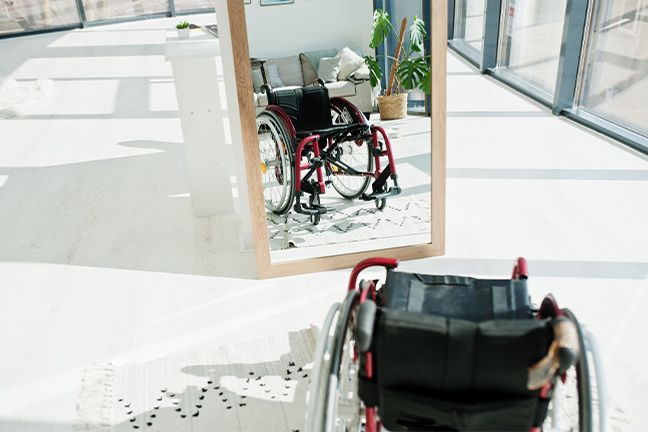In a groundbreaking ruling by the Arizona Supreme Court, the use of peremptory strikes—which allows attorneys to remove potential jurors without a stated reason—was eliminated in civil and criminal cases effective January 1, 2022.
Bias and the Use of Peremptory Challenges
According to Chief Judge of the Arizona Court of Appeal, Peter Swann, “There is no other means of skewing a jury other [like] the peremptory strike.”[i] In petitioning the Arizona Supreme Court to eliminate peremptory challenges, Chief Judge Swann noted how strikes of potential jurors without cause are often based on stereotypes and unconscious bias.[ii] Despite restrictions placed upon the use of peremptory strikes by the United States Supreme Court in its ruling in Batson v. Kentucky[iii], which required there be a race neutral reason for a strike, peremptory strikes have been used to disproportionately remove jurors of color.[iv] At the Superior Court in downtown Phoenix in 2019, for example, potential jurors who were black were stricken at a 40% greater rate and Native Americans were stricken at a 50% greater rate.[v] In order to create more diverse and inclusive juries, the Arizona Supreme Court eliminated the use of peremptory strikes.
Case Specific Questionnaires and Open-Ended Questions Encouraged
Prior to the ruling, each side in a civil case was given four peremptory strikes. Without peremptory challenges, attorneys have fewer opportunities to dismiss potentially impartial jurors, making the use of effective voir dire more critical in the jury selection process. To assist counsel, the courts in Arizona are now emphasizing the use of a case-specific questionnaire to be completed by perspective jurors and allowing sufficient and meaningful time for the court and the parties to question prospective jurors.[vi] In Maricopa and Yavapai counties, those questionnaires are online and screened by the judge in real time. The responses are then put on a spreadsheet and provided to counsel before oral voir dire.
The reason for the emphasis on case-specific questionnaires is that studies have found potential jurors are more likely to be candid when asked open-ended questions about their personal opinions and life experiences in writing rather than during oral voir dire.[vii] If asked the right questions, research has found, potential jurors are willing to provide the basis for disqualification.[viii] While not mandatory, the use of questionnaires is strongly encouraged.
Under the new rules, civil parties must include proposed questions for the case specific questionnaire and oral voir dire in their Joint Pre-Trial Statement. The judge may determine the areas of inquiry and the specific questions to be asked and may limit written and oral examination by counsel. The judge also decides whether to permit the parties to give a brief opening statement before oral voir dire.
Post-Elimination of Peremptory Challenges Jury Selection
In addition to the emphasis on case-specific written questionnaires with open-ended questions and allowing sufficient and meaningful time for questioning by the court and the parties, the courts in Arizona have adopted the following changes in jury selection now that peremptory challenges have been eliminated:
(1) Judges are discouraged from rehabilitating potential jurors with leading, conclusory questions.
(2) The length of jury selection should be proportionate to the complexity of the case.
(3) The court is to maintain a comprehensive record of all case-specific answers provided during voir dire.
(4) The privacy of jurors is to be maintained.[ix]
Striking a Potential Juror for Cause
In Arizona, an attorney seeking to disqualify a potential juror for cause has to demonstrate, by a preponderance of the evidence, the juror cannot be fair and impartial. In considering whether to strike a potential juror for cause, the judge must consider the totality of the potential juror’s responses during voir dire and his/her conduct.[x] By presenting potential jurors with the ability to answer questions which allow them to freely respond and potentially reveal biases, attorneys have a greater chance of successfully striking jurors for cause.
Takeaway
For practitioners in Arizona, with the elimination of peremptory challenges, a more robust voir dire is required. Thoughtful consideration must be given to the open-ended questions to be included in the case-specific questionnaire to ferret out jurors who are unable to be fair and unbiased. The use of the case-specific questionnaire allows counsel to eliminate jurors for cause, while the elimination of peremptory challenges will hopefully lessen the bias in the jury selection process.
SEO Tags:
Arizona
Law Update
[i] Corley, Cheryl, Arizona’s Supreme Court Eliminates Peremptory Challenges, NPR (Sept. 26, 2021), https://www.npr.org/2021/09/06/1034556234/arizonas-supreme-court-eliminates-peremptory-challenges
[ii]Id.
[iii] 476 U.S. 79 (1986)
[iv] Team, JA, Arizona Eliminates Peremptory Challenges in all Jury Trials – What Does that Mean for your Civil Procedure, Trial Law (October 5, 2021), https://juryanalyst.com/blog/arizona-eliminates-peremptory-challenges/
[v] Report and Recommendations, Arizona Task Force on Jury Data Collection, Policies, and Procedures, (Oct. 4, 2021) pp. 36-37
[vi] Id. at p. 41
[vii] Id.
[viii] Id.
[ix] Rule 47 – Jury Selection; Juror Information; Voir Dire; Challenges, Ariz. R. Civ. P. 47.
[x] Ariz. R. Civ. P. 47(d)(3)

 Author: Maria Regina Kupillas
Author: Maria Regina Kupillas
 Editor: Grace Shuman
Editor: Grace Shuman
 Cannabis Workers Allege Quota to Trim 4 Pounds a Day Violates the California Labor Code
Cannabis Workers Allege Quota to Trim 4 Pounds a Day Violates the California Labor Code
 The Ninth Circuit Reminds Us: Every Word Matters
The Ninth Circuit Reminds Us: Every Word Matters
 NO WAY, PRO SE! The Consequences of Abusing the Judicial System as a Pro Se Litigant in Colorado
NO WAY, PRO SE! The Consequences of Abusing the Judicial System as a Pro Se Litigant in Colorado
 Victim of Financial Mismanagement or Unlawful Retaliation? New Jersey City University Program Founder Claims School Retaliated After Reporting Alleged Sexual Harassment
Victim of Financial Mismanagement or Unlawful Retaliation? New Jersey City University Program Founder Claims School Retaliated After Reporting Alleged Sexual Harassment
 “Real Housewives” Gets a Reality Check
“Real Housewives” Gets a Reality Check
 Missing a Chapter: Insufficiency of Expert Deposition Testimony in Medical Malpractice Litigation
Missing a Chapter: Insufficiency of Expert Deposition Testimony in Medical Malpractice Litigation
 Crash Course: Why Summary Judgment Misses the Mark in Illinois Multi-Cause Limousine Crash Collision
Crash Course: Why Summary Judgment Misses the Mark in Illinois Multi-Cause Limousine Crash Collision
 Bitter Truths: Lead, Cadmium, and Defective Pleadings in California Chocolate Class Action
Bitter Truths: Lead, Cadmium, and Defective Pleadings in California Chocolate Class Action
 The Law of Unintended Consequences: Including Insurance Brokers in Litigation Strategy Communication May Waive the Attorney-Client Privilege
The Law of Unintended Consequences: Including Insurance Brokers in Litigation Strategy Communication May Waive the Attorney-Client Privilege
 An Employer Can Benefit from Being the Most Reasonable Person in the Courtroom
An Employer Can Benefit from Being the Most Reasonable Person in the Courtroom
 The Party Who Controls the Narrative Controls the Outcome in Trial
The Party Who Controls the Narrative Controls the Outcome in Trial
 $1.75 M Settlement Ends EEOC Claim
$1.75 M Settlement Ends EEOC Claim
 Pandemic Nightmare: Horse Racing Track Wants Coverage for COVID Business Losses
Pandemic Nightmare: Horse Racing Track Wants Coverage for COVID Business Losses
 I (May) Survive: A Respondeat Superior Claim May Survive Despite Dismissal of a Claim Against an Employee
I (May) Survive: A Respondeat Superior Claim May Survive Despite Dismissal of a Claim Against an Employee
 Arizona Construction Lenders Beware – You Might Not Be Insured Against a Senior Mechanics’ Lien!
Arizona Construction Lenders Beware – You Might Not Be Insured Against a Senior Mechanics’ Lien!
 Arizona Court of Appeals Insulates County from Liability for Deputy Sheriff’s Negligence
Arizona Court of Appeals Insulates County from Liability for Deputy Sheriff’s Negligence
 Arizona Court of Appeals Clarifies the Burden of Proof in a Motion for Summary Judgment
Arizona Court of Appeals Clarifies the Burden of Proof in a Motion for Summary Judgment